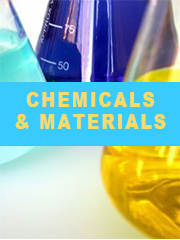Report overview
Magnesium hydroxide is the inorganic compound. It occurs in nature as the mineral brucite. It is a white solid with low solubility in water. Magnesium hydroxide is a common component of antacids, such as milk of magnesia, as well as laxatives. Natural magnesium hydroxide is used commercially as a fire retardant. Most industrially used magnesium hydroxide is produced synthetically. Like aluminum hydroxide, solid magnesium hydroxide has smoke suppressing and flame retardant properties. It is a key player in the family of inorganic flame retardant.
This report aims to provide a comprehensive presentation of the global market for Magnesium Hydroxide Flame Retardants, with both quantitative and qualitative analysis, to help readers develop business/growth strategies, assess the market competitive situation, analyze their position in the current marketplace, and make informed business decisions regarding Magnesium Hydroxide Flame Retardants. This report contains market size and forecasts of Magnesium Hydroxide Flame Retardants in global, including the following market information:
Global Magnesium Hydroxide Flame Retardants Market Revenue, 2018-2023, 2024-2029, ($ millions)
Global Magnesium Hydroxide Flame Retardants Market Sales, 2018-2023, 2024-2029, (K MT)
Global top five Magnesium Hydroxide Flame Retardants companies in 2022 (%)
The global Magnesium Hydroxide Flame Retardants market was valued at US$ 382.8 million in 2022 and is projected to reach US$ 514.2 million by 2029, at a CAGR of 4.3% during the forecast period. The influence of COVID-19 and the Russia-Ukraine War were considered while estimating market sizes.
Global Magnesium Hydroxide Flame Retardants key players include Martin Marietta, Kyowa Chemical Industry, Huber Engineered Materials (HEM), ICL, Russian Mining Chemical Company, etc. Global top five manufacturers hold a share about 78%. Europe is the largest market, with a share about 40%, followed by North America and Japan, both have a share about 38 percent. In terms of product, Chemical Synthesis is the largest segment, with a share over 84%. And in terms of application, the largest application is PVC, followed by PE, etc.
We surveyed the Magnesium Hydroxide Flame Retardants manufacturers, suppliers, distributors and industry experts on this industry, involving the sales, revenue, demand, price change, product type, recent development and plan, industry trends, drivers, challenges, obstacles, and potential risks.
Total Market by Segment:
Global Magnesium Hydroxide Flame Retardants Market, by Type, 2018-2023, 2024-2029 ($ Millions) & (K MT)
Global Magnesium Hydroxide Flame Retardants Market Segment Percentages, by Type, 2022 (%)
Chemical Synthesis
Physical Smash
Global Magnesium Hydroxide Flame Retardants Market, by Application, 2018-2023, 2024-2029 ($ Millions) & (K MT)
Global Magnesium Hydroxide Flame Retardants Market Segment Percentages, by Application, 2022 (%)
PVC
PE
Engineering Thermoplastics
Rubber
Other
Global Magnesium Hydroxide Flame Retardants Market, By Region and Country, 2018-2023, 2024-2029 ($ Millions) & (K MT)
Global Magnesium Hydroxide Flame Retardants Market Segment Percentages, By Region and Country, 2022 (%)
North America
US
Canada
Mexico
Europe
Germany
France
U.K.
Italy
Russia
Nordic Countries
Benelux
Rest of Europe
Asia
China
Japan
South Korea
Southeast Asia
India
Rest of Asia
South America
Brazil
Argentina
Rest of South America
Middle East & Africa
Turkey
Israel
Saudi Arabia
UAE
Rest of Middle East & Africa
Competitor Analysis
The report also provides analysis of leading market participants including:
Key companies Magnesium Hydroxide Flame Retardants revenues in global market, 2018-2023 (Estimated), ($ millions)
Key companies Magnesium Hydroxide Flame Retardants revenues share in global market, 2022 (%)
Key companies Magnesium Hydroxide Flame Retardants sales in global market, 2018-2023 (Estimated), (K MT)
Key companies Magnesium Hydroxide Flame Retardants sales share in global market, 2022 (%)
Further, the report presents profiles of competitors in the market, key players include:
Martin Marietta
Kyowa Chemical Industry
Huber Engineered Materials (HEM)
ICL
Konoshima
Tateho Chemical
Nuova Sima
Russian Mining Chemical Company
Nikomag
Xinyang Minerals Group
XuSen
Jinan Taixing Fine Chemicals
Wanfeng
Fire Wall
Yinfeng Group
Outline of Major Chapters:
Chapter 1: Introduces the definition of Magnesium Hydroxide Flame Retardants, market overview.
Chapter 2: Global Magnesium Hydroxide Flame Retardants market size in revenue and volume.
Chapter 3: Detailed analysis of Magnesium Hydroxide Flame Retardants manufacturers competitive landscape, price, sales and revenue market share, latest development plan, merger, and acquisition information, etc.
Chapter 4: Provides the analysis of various market segments by type, covering the market size and development potential of each market segment, to help readers find the blue ocean market in different market segments.
Chapter 5: Provides the analysis of various market segments by application, covering the market size and development potential of each market segment, to help readers find the blue ocean market in different downstream markets.
Chapter 6: Sales of Magnesium Hydroxide Flame Retardants in regional level and country level. It provides a quantitative analysis of the market size and development potential of each region and its main countries and introduces the market development, future development prospects, market space of each country in the world.
Chapter 7: Provides profiles of key players, introducing the basic situation of the main companies in the market in detail, including product sales, revenue, price, gross margin, product introduction, recent development, etc.
Chapter 8: Global Magnesium Hydroxide Flame Retardants capacity by region & country.
Chapter 9: Introduces the market dynamics, latest developments of the market, the driving factors and restrictive factors of the market, the challenges and risks faced by manufacturers in the industry, and the analysis of relevant policies in the industry.
Chapter 10: Analysis of industrial chain, including the upstream and downstream of the industry.
Chapter 11: The main points and conclusions of the report.
